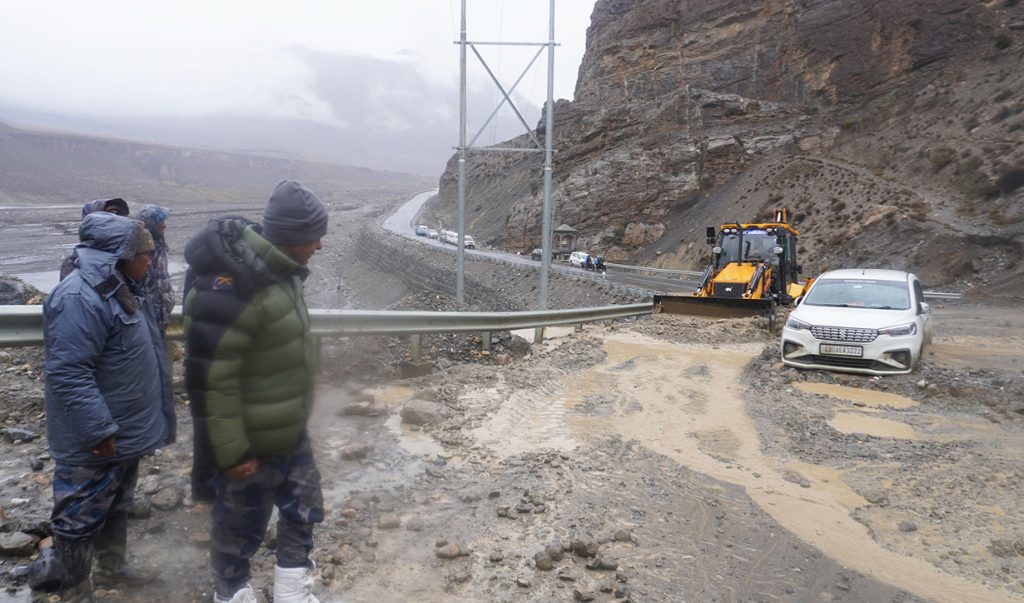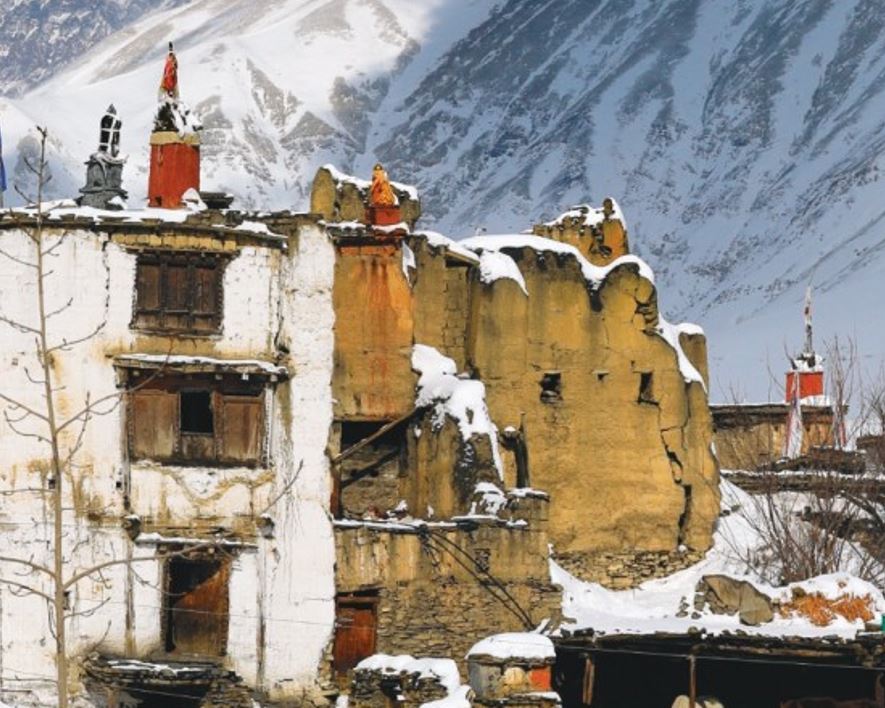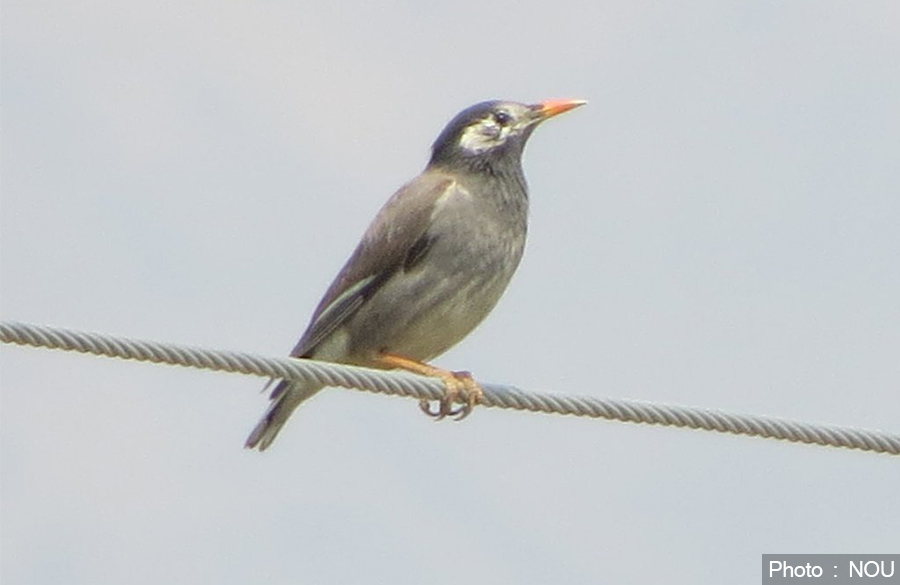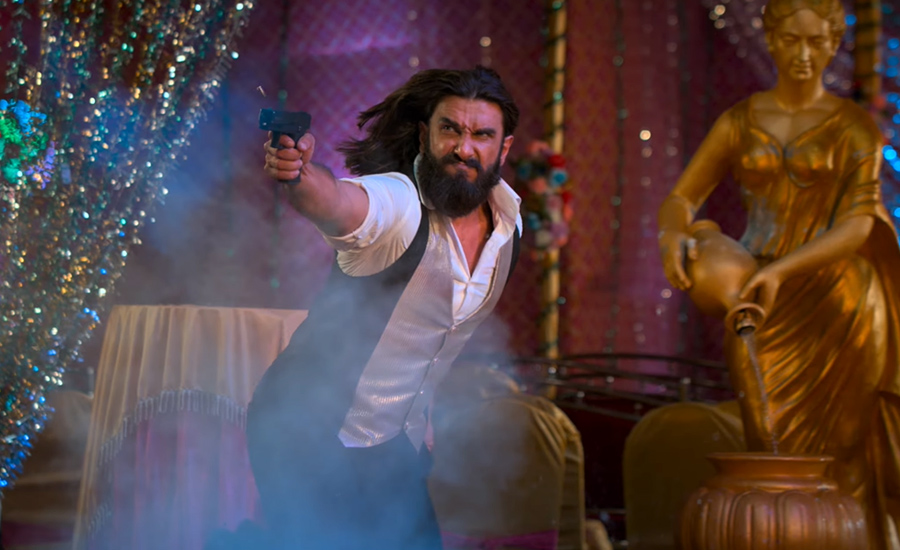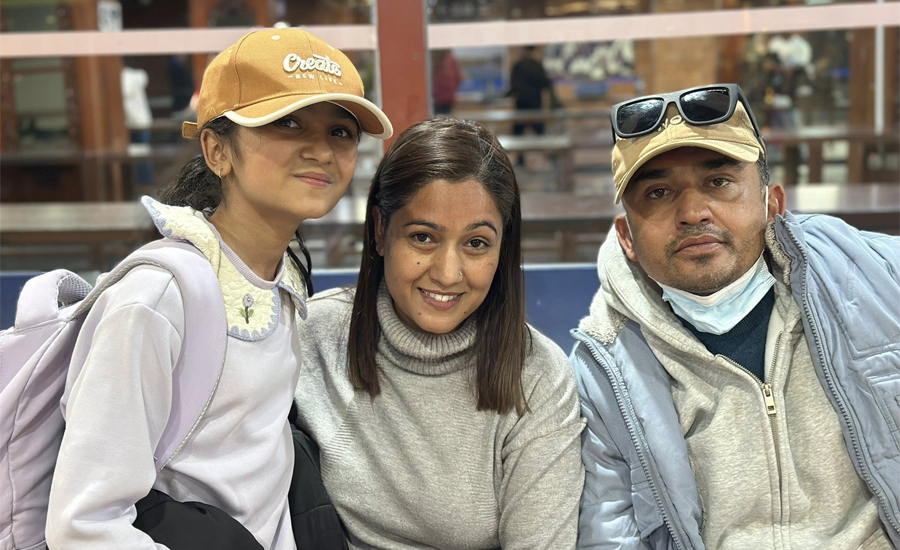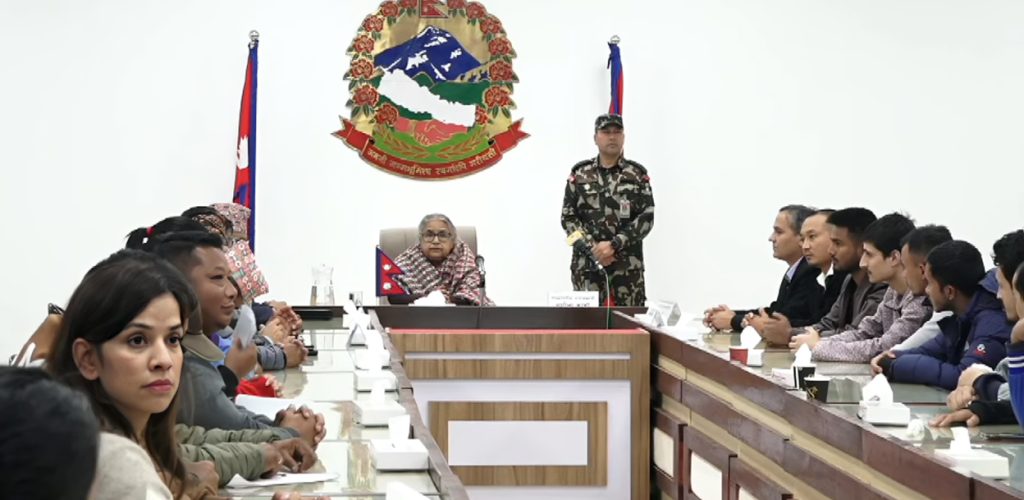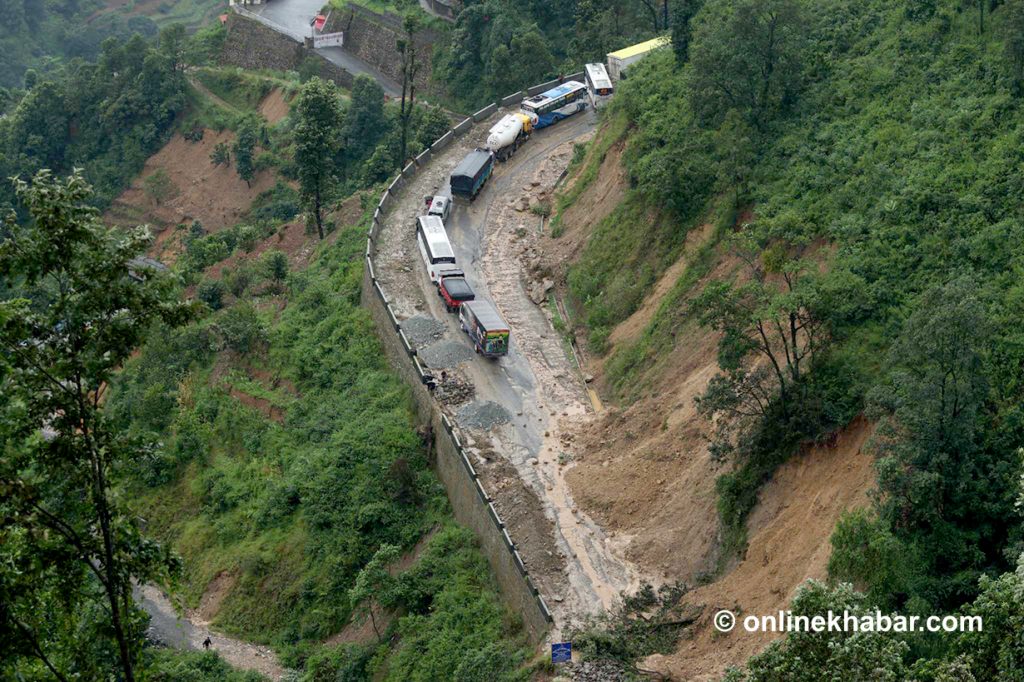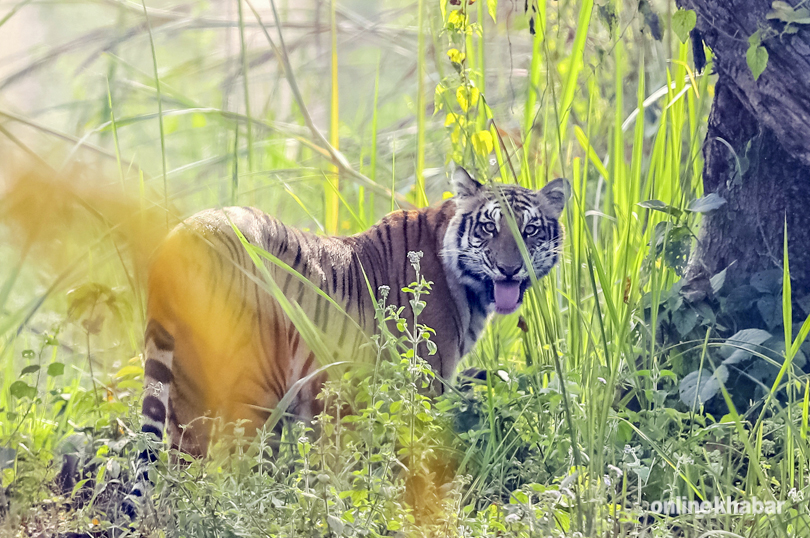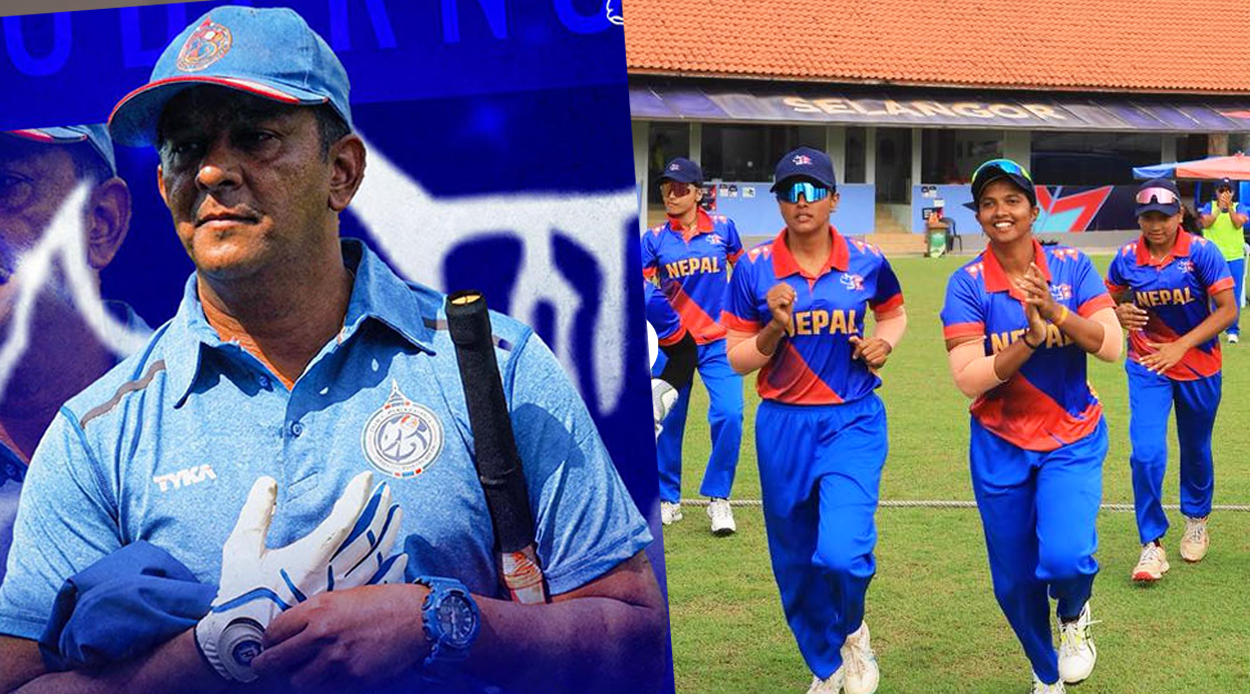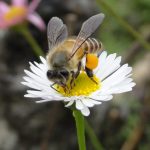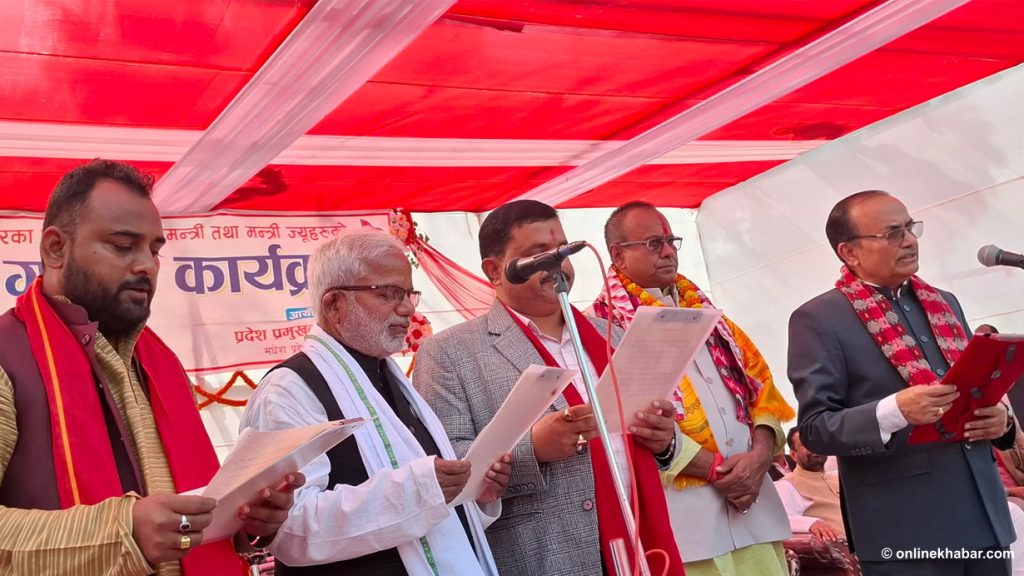“If you can dream it, you can do it”— Walt Disney
At the age of 66, my mountain biking trip to Lo Manthang, Upper Mustang, not only made me realise my dream and rise to the daunting challenges put up by the punishing and unforgiving terrain, but also curiously helped me rediscover my own strength and grit.
Believed to be a mystical Shangri-La, the 500-year old capital of Mustang, “the Kingdom of Lo”–Lo Manthang–was off limits to the foreigners until 1992. Today, the tiny enclave hidden within the folds of rolling mountains on the Tibetan plateau has become a destination of a lifetime for foreign tourists and Nepalese alike.
Some 15 years ago when I first saw pictures of Lo Manthang on the magazine pages and read about the place, they appeared surreal. I still remember old folks speak in awe about it as the “himal pari ko desh” meaning a land behind the Himalayas. For me, it seemed at the time, out of bounds, something of a dream.
After riding to Kalinchok(3,842m), Dolakha in 2014, I fantasised about a trip to Lo Manthang. I planneds for three years in a row (I had been to lower Mustang to Muktinath once with family and friends on a vehicle) and see for myself the “Walled City of Lo” (another name for Lo Manthang)–but it never came about.
But dreams can come true, can’t they? On October 20, 2018 I took a bus to Pokhara to fly to Jomsom, the kick-off point for Lo Manthang. I was to be joined by three other friends in Jomsom.
The flight to Jomsom itself was no less an amazing experience–scary too! The 20-minute flight, though short, afforded a breath-taking view of a panoply of snow-clad mountains.
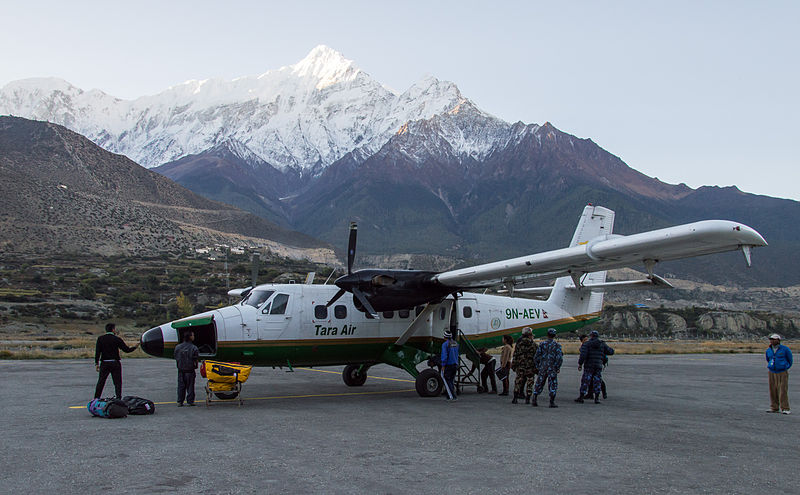
The mountains appeared so close that I felt I could reach out to them! It reminded me of a mountain flight I did some 20 years ago when I literally gasped in awe to see for the first time the majestic array of the Himalayas including the Everest, literally a hop skip and jump away.

Whoa! A few minutes before preparing to land, the 18-seater Dornier banked to its left and my heart skipped a beat. I feared we were going to hit the side of the mountain that loomed ahead dangerously close.
All of a sudden, the plane shuddered violently as it flew low through the deep Kali Gandaki gorge. Full of trepidation, I held my breath until I saw the runaway tarmac zoom in at full tilt.
I sighed in great relief as the plane finally touched down.
Phew, that was close, man! I said to myself.
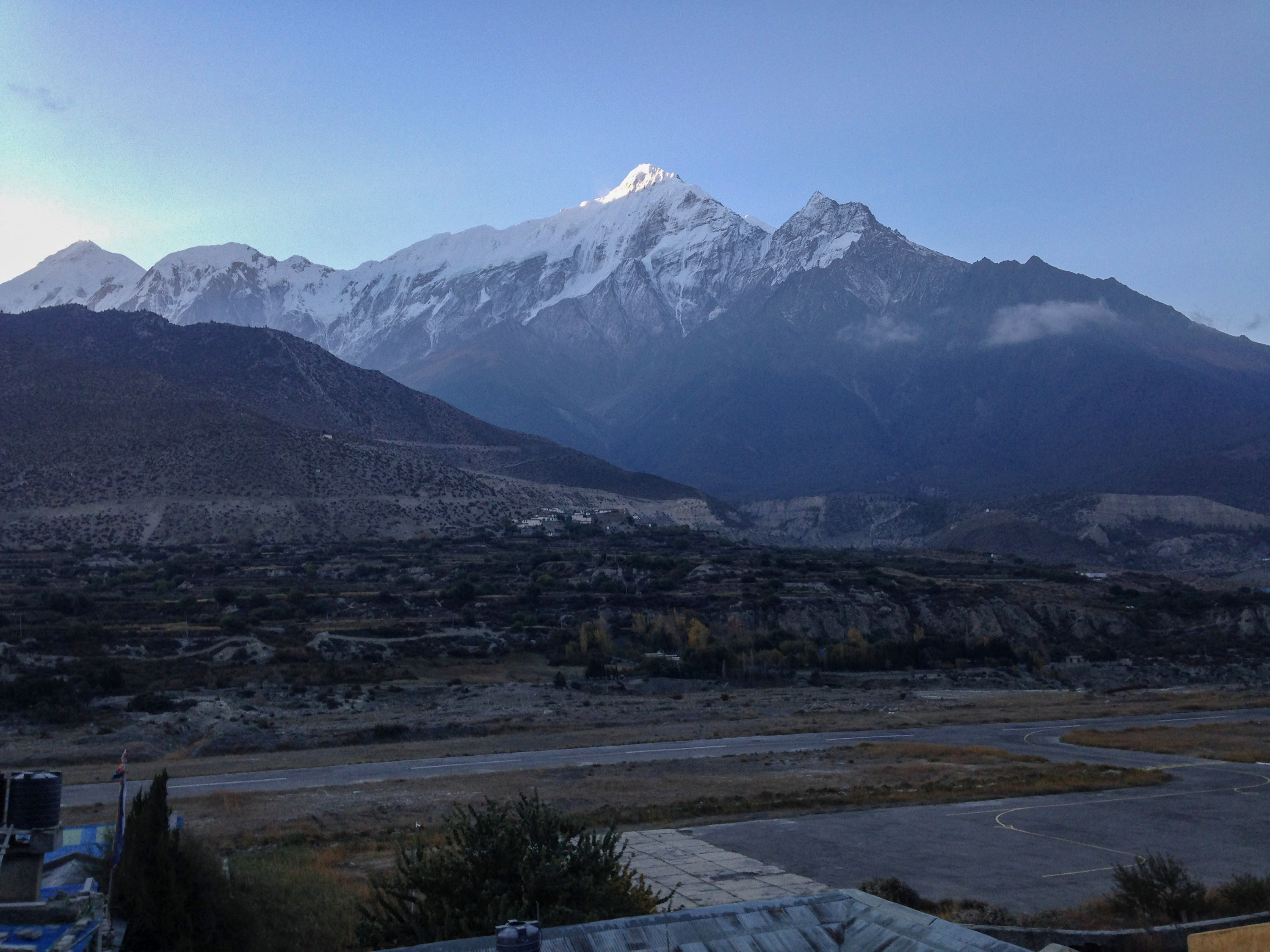
Later, I learned that at this point, the Southerly wind that barrels through the Kali Gandaki gorge cutting through the great massifs like the Dhaulagiri and the Annapurna range gains a gale force reaching no less than 35 knots (over 65km per hour) in the afternoon.
The highest recorded wind speed by the Jomsom air-tower is said to have crossed over 80 knots (148km per hour).
Incredulous!
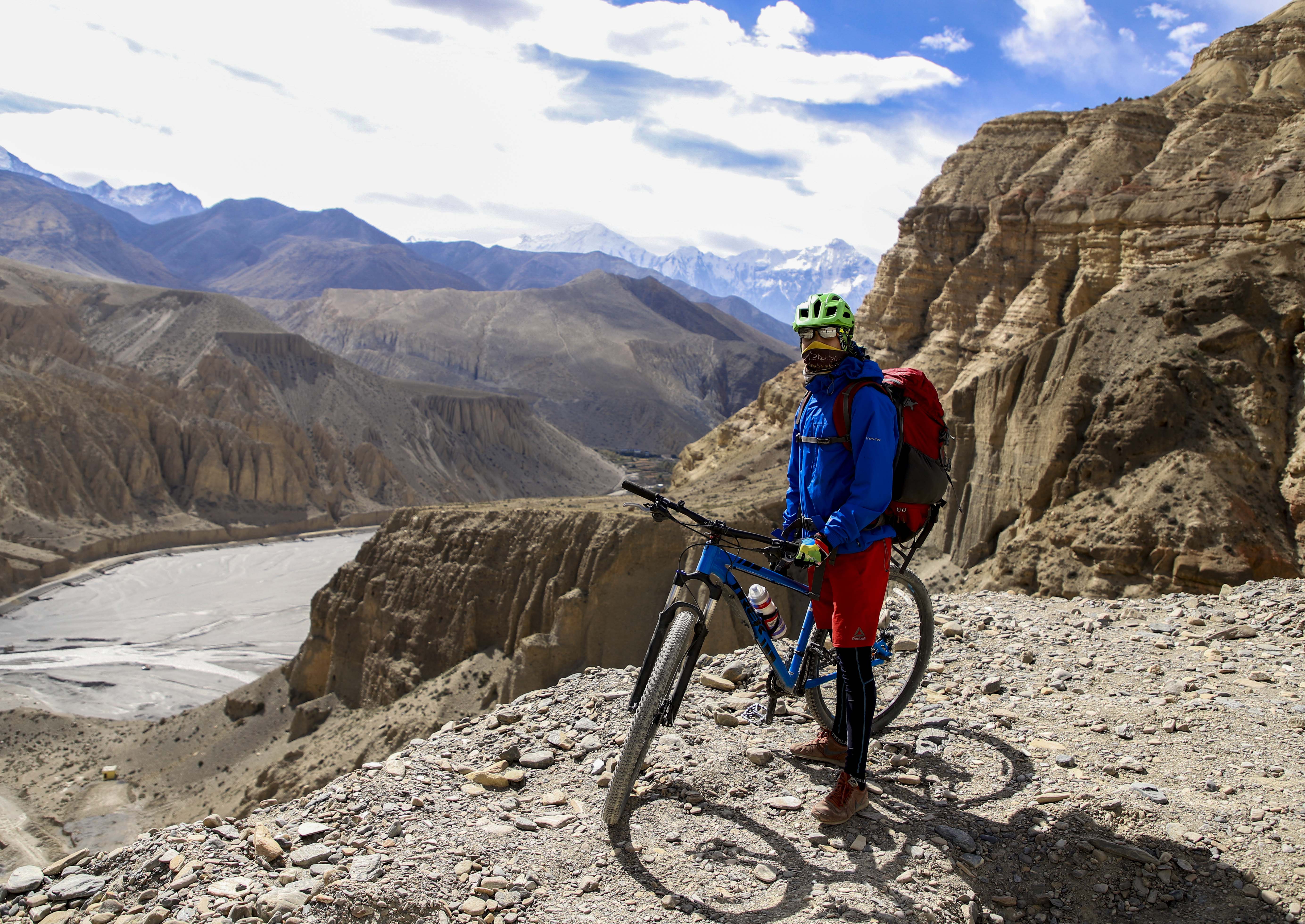
Mustang: another name for one of the deepest canyons in the world
The canyon walls south of the Jomsom airstrip (the flight-path after take-off), which soar to a stunning height from the riverbed are estimated at three miles or 6,000m below the Annapurna and Dhaulagiri massifs. This narrow gully is also notoriously known as the “Great Himalayan Breach.”
Little surprise, the Pokhara-Jomsom flights are only scheduled for the mornings because of high winds that start in the afternoon and last until sundown. Despite the precautions, delays and cancellations of Jomsom flights are almost quotidian.
Strangely, it is not only the aircraft, but even the birds go through no less a harrowing experience while flying across the deep canyon.
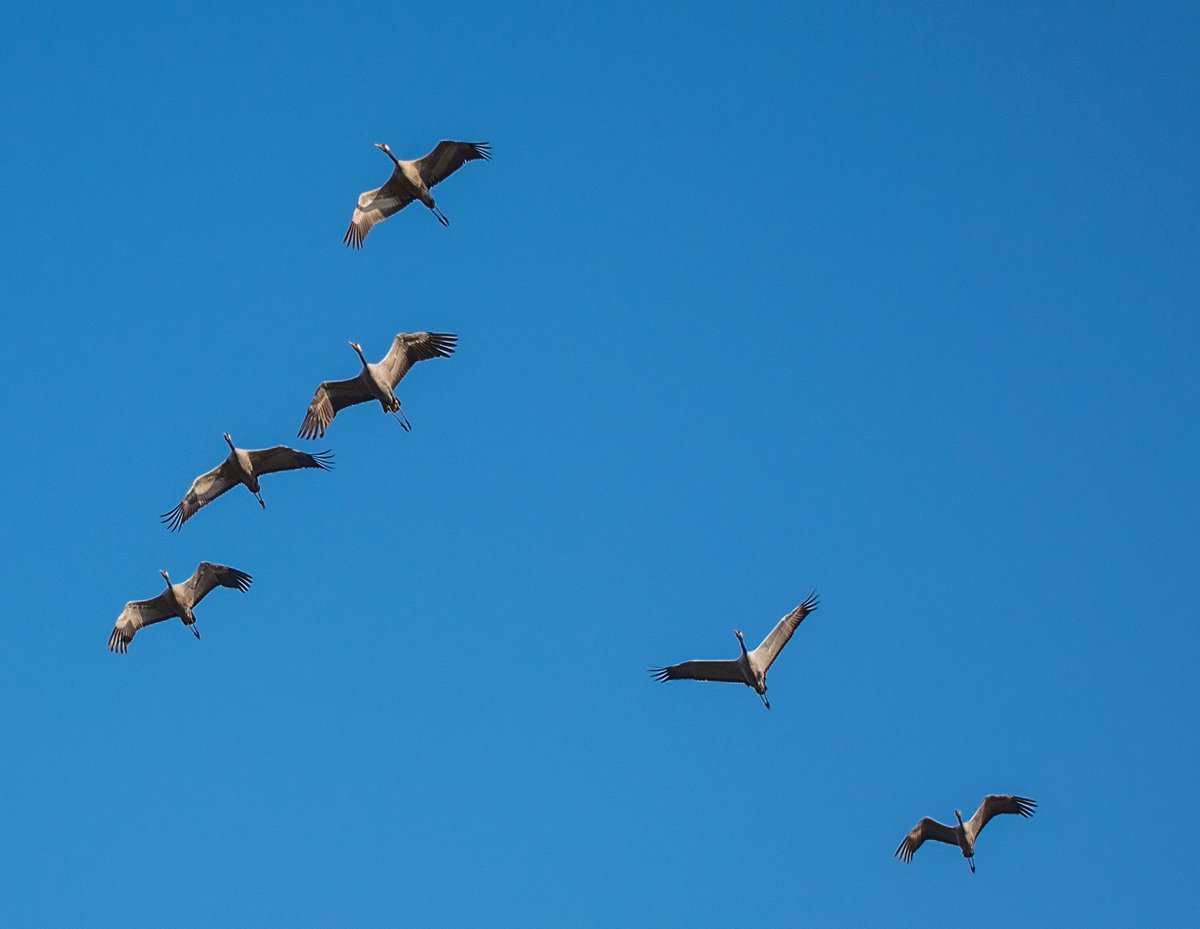
If you are a bird watcher or a naturalist, you would be interested to know that Jomsom also happens to be one of the flight- paths for the wintering waterfowl, especially the Demoiselle Cranes or Karang Kurung in Nepali.
On their annual migration flight, they travel from the north as high up as the highlands of Tibet, Mongolia, and even Siberia to their wintering ground as far south as the Thar desert in Rajasthan, India.
Come late fall as the snowfall starts in the highlands, the migration commences and you can watch from the center of the town of Jomsom large flocks of these magnificent birds flying overhead in a V-shape phalanx.
When the cranes reach the narrow part of the Kal Gandaki gorge upstream from Tukuche and arrive at Jomsom, the strong southerly wind suddenly hits them disbanding their formation and sending them into chaos.
They eventually manage to spiral upwards with the help of the rising thermal current and fly across the gully to complete their epic journey over the Himalayas.
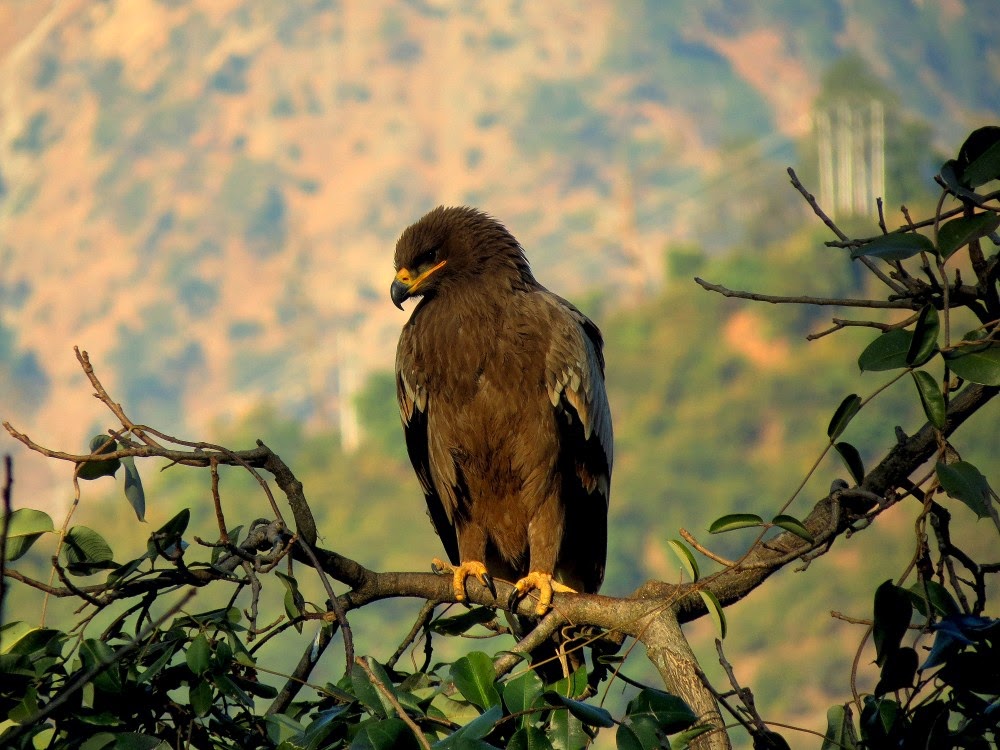
The distress calls made by those cranes are heard far and wide. Most of them make it but for some, it’s their last as the resident golden eagles lying in wait single out the unfortunate ones and swoop down on them. Wow, how I wish I could watch the drama in reality!
Located at the head of the spectacular Kali Gandaki gorge and set against the backdrop of towering Dhaulagiri( 8,167m),Tukuche( 6,920 m), Nilgiri Central (6,940),and the Annapurna (8,091m)m on one side, and the desert-like bare hills on the other, the small quintessential town, Jomsom (2,700m), was enough to make me fall in love with it.
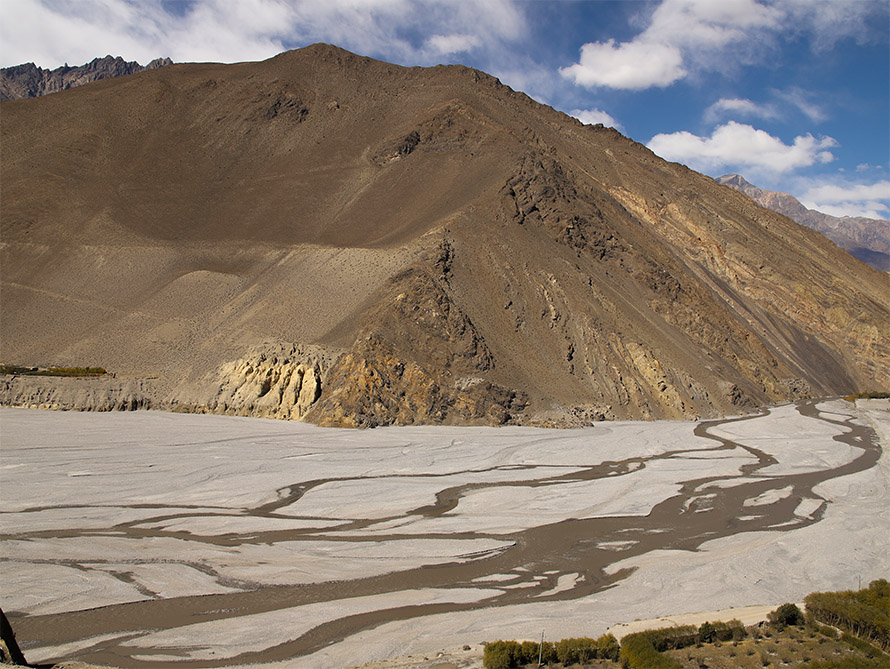
After the balmy weather of Pokhara, there was a certain chill in the air while I disembarked from the plane at Jomsom at 11.30 in the morning. I could already feel the strong gust of wind that slapped me as I made it to the terminal building. The Sun was bright and warm though, seemingly compensating for the cold wind.
Whoa! Jomsom proved to be a happening place, a hub of feverish activity. The main street buzzed from early morning until late into the night with a constant stream of traffic including the walking tourists, the Boleros, the Scorpios and what appeared like a cavalcade of motorcycles.
The crowd in the street was no less, from dawn till dusk. People thronged the shops lining the main street buying local goods like apples, dehydrated fruits, zimbu( a highland dried weed used as condiment), churpi(dried yak cheese), souvenirs and varieties of apple and apricot brandy.
Surprise, surprise! I learned later that not a single hotel, lodge or inn in Jomsom bazaar had room to offer. All were packed to capacity.
“During season-time, it’s always like this, so to avoid such predicament, it’s best to book a hotel in advance from either Kathmandu or Pokhara” commented Khagendra Tulachan, the owner of the Majesty hotel where I stayed for the night.
Day I
My friends arrived by bus from Kathmandu in the morning the next day. Excitement writ all over our faces, we hastened to offload our mountain bikes. We considered our 13-day trip to Lo Manthang and the return ride all the way back to Beni, Myagdi nothing less than an epic journey. We could not wait to hit the trail! Well, ours was a mixed bunch.
Khasing Rai, aged 30, is a pro cameraman and runs a company called Montage Nepal doing all kinds of videos and photo-shoots: weddings, events, music video, and adventure sports. He loves to trek and ride his mountain bike. He is hung-up on doing crazy kind of things–recently did a trek to a remote place in west Nepal. The 13-day journey included walking bare feet for three days to an elevation of 4,600m. Crazy!
Diwas Pradhan, age 32, is an IT graduate but dabbles in event management under the banner of Pangro Trade & Service, Jhamshikel. He loves mountain biking. Come any cycling event staged in Kathmandu and you’ll find him there, one way or the other either as an organizer or a helping hand. He is also associated with Cycle City Network, Nepal–a youth-volunteered NGO fostering the idea of a cycle-friendly city in Kathmandu. His passions include computers and social work.
Shayeet Sharma: he is just a kid, only 18, a student. I got to know him as he is a neighbour. A bright and breezy lad, he is nuts about body-building. Other passions include playing football and riding his mountain bike. He wants to become a professional footballer and a bike racer (I wonder, how is going juggle his studies and his passions). To me, all three seemed ruthlessly ambitious. Must be their age, I mused.
Darn it, as we prepared to gear ourselves for the ride, we found that one of the bike’s tires, Shayeet’s, had a big gash, which was beyond repair! Now, Jomsom is not Kathmandu. There are no bike shops where you can buy a mountain bike tire.
I immediately sprang into action and rushed to a hotel where I’d been the other day and had seen a number of bikes leaned against a wall, not quite used by the look of them as some had flat tires.
We were lucky as one of the bikes was a 29er, the size of tire we needed. The hotel owner Mr. Tripple Gurung from The Om’s Inn, Jomsom, seemed only too happy to oblige us and a worried Shayeet beamed after the ruptured tire was replaced.
After a hurried but a filling and nourishing breakfast of buckwheat bread with honey, omelettes and a new item, tsampa porridge (made of local barley called Uwa, which became my favourite all through the entire trip), we set off for Kagbeni, the gateway to Upper Mustang, 11km away.

The kick-off!
Despite the chill in the weather, the 10 am sun shone brightly. The gravelly jeep track led us on a slight slope until we crossed a bridge over the Kali Gandaki river.
The road appeared quite busy as the jeeps kept passing us going up and down kicking off a cloud of dust. We waved at small groups of foreign trekkers walking with their hiking poles.
The Kali Gandaki river with its outspread riverbed kept us company all the way.

I’d my fears that the road would take a steep climb right from the start but save for a few moderate inclines, we were spared the hard stuff.
The landscape that met my eyes was something new and unusual for me.
The barren rocky terrain with patches of thorny dwarf shrubs appeared like pictures of the high deserts of New Mexico, the United States.
The stark landscape set against the deep indigo sky held a strange fascination over me.
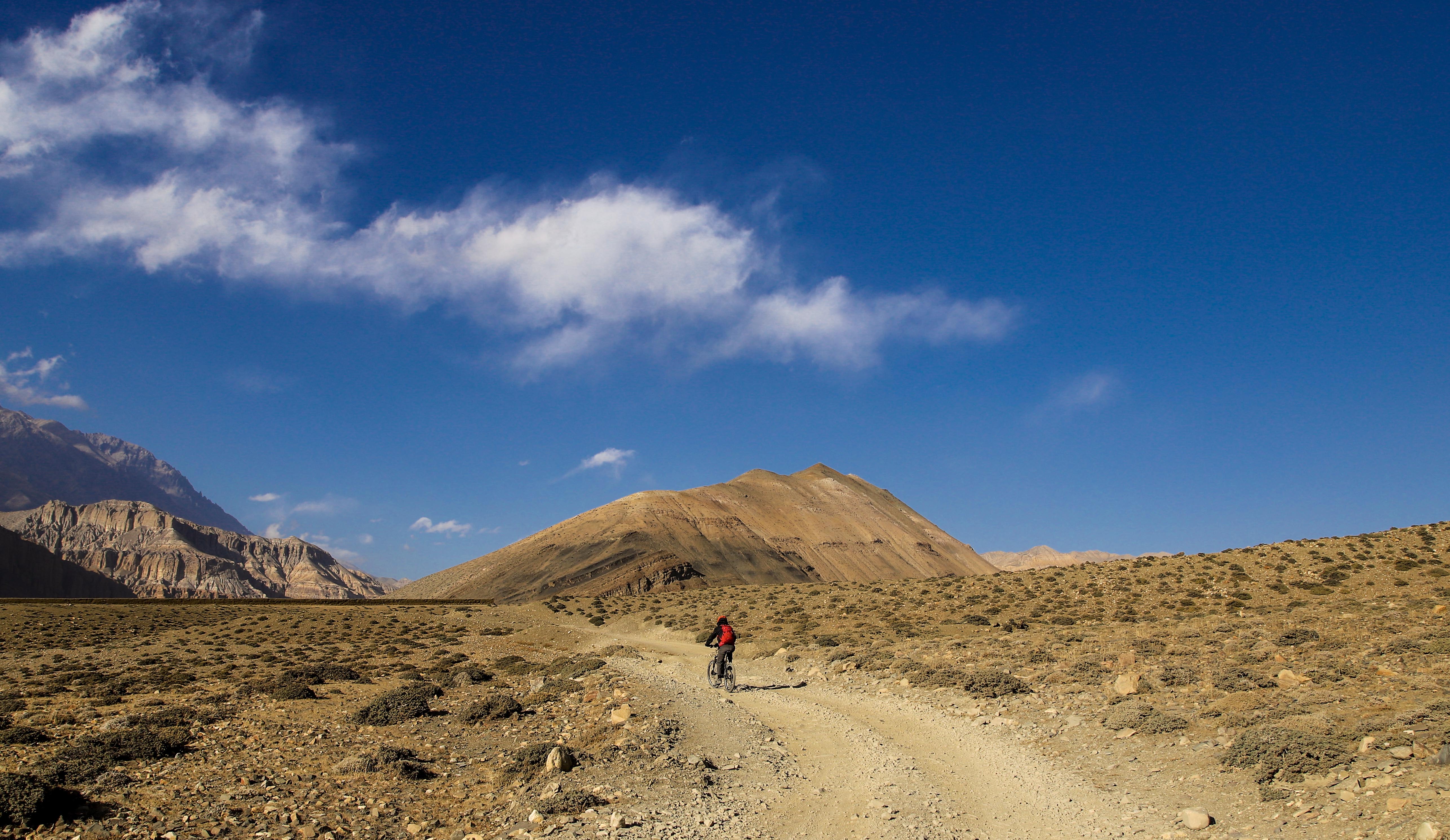
From Ekalbhatti, it took only half an hour to reach Kagbeni, the gateway to Upper Mustang. The vista changed as we approached the Kali Gandaki river valley nestled in between looming bare hills as the murky water of Kali Gandaki cut across a vast swathe of a rocky riverbank.
Bhote pipal (the highland fig) trees and small enclosed apple orchards seem to enhance the stark beauty of the settlement. Sweeping plots of golden uwa (naked barley, a local produce of Mustang) fields on one side of the town announced its fertile soil and spoke of the industrious Thakali, Gurung and Tibetan communities of Kagbeni.
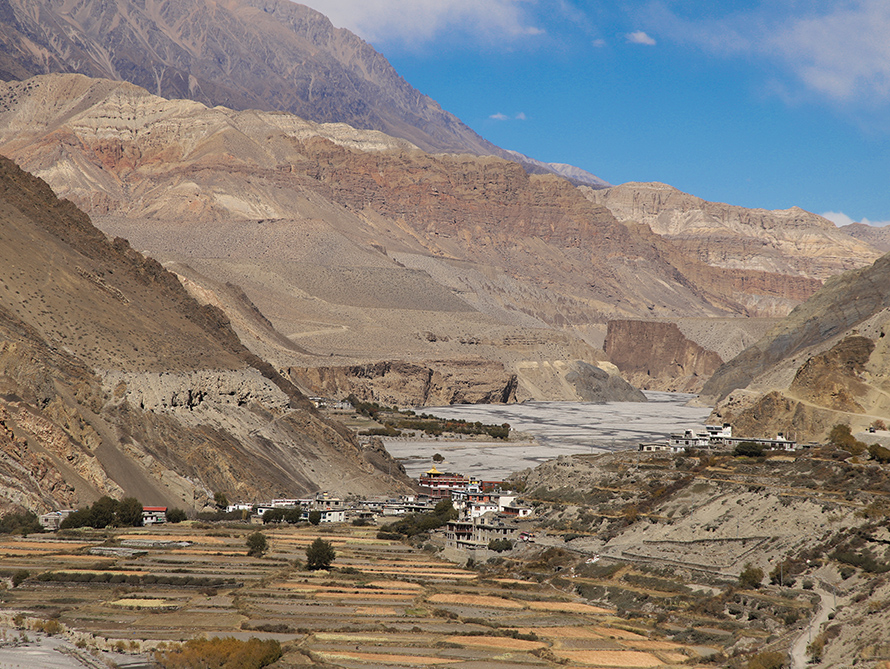
We stopped for dal-bhat, our favourite. Needless to write, it remained our favourite for lunch for the rest of the journey. So far so good; I did quite well up till this point and kept pace with the young guys. I had my fears though. “It is just the beginning,” I reminded myself.
End of Part I
PHOTOS: KHASING RAI




